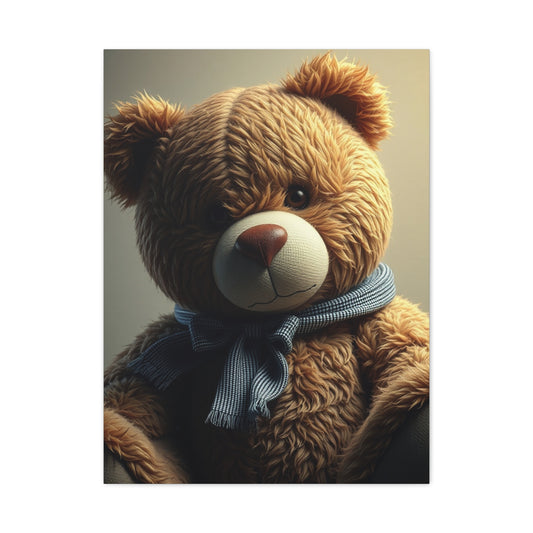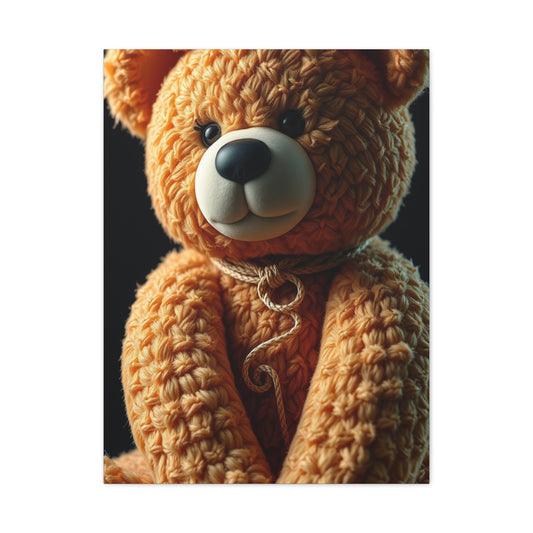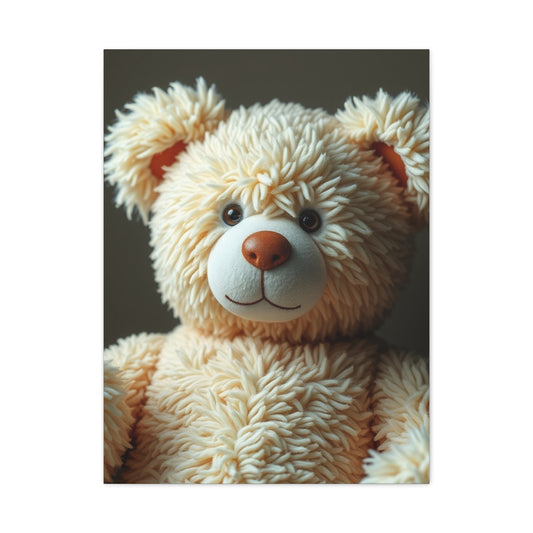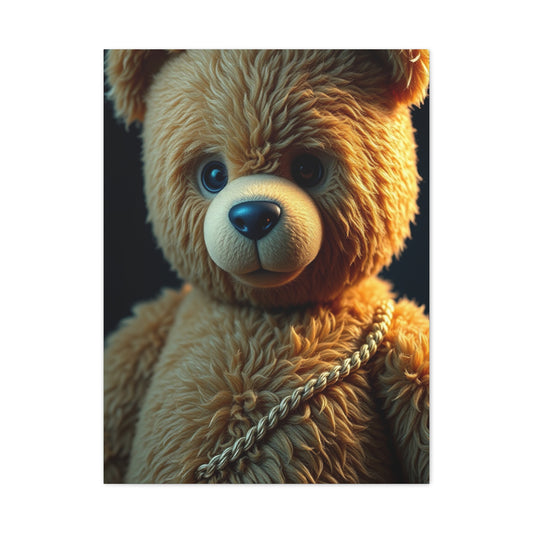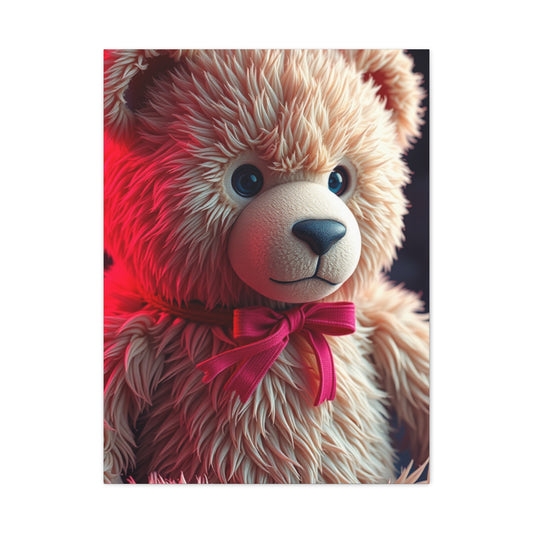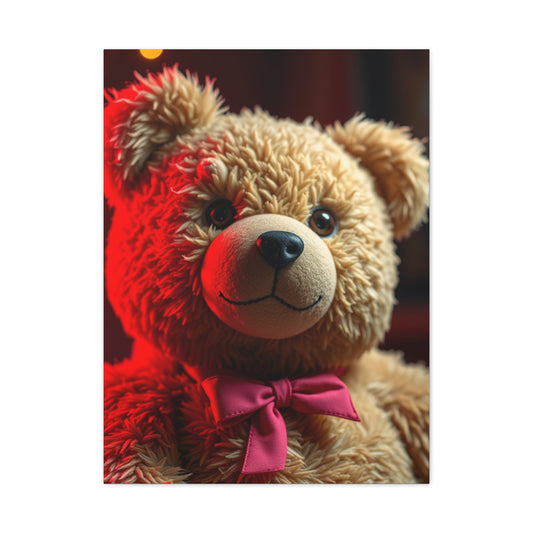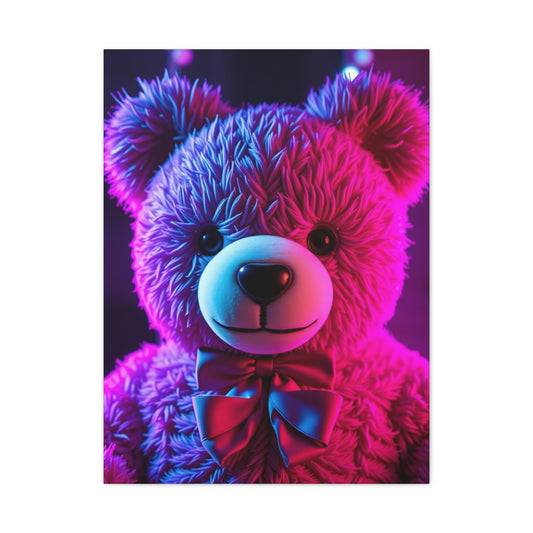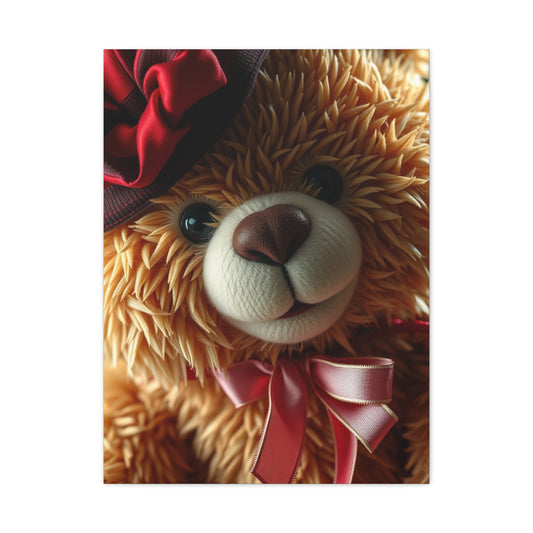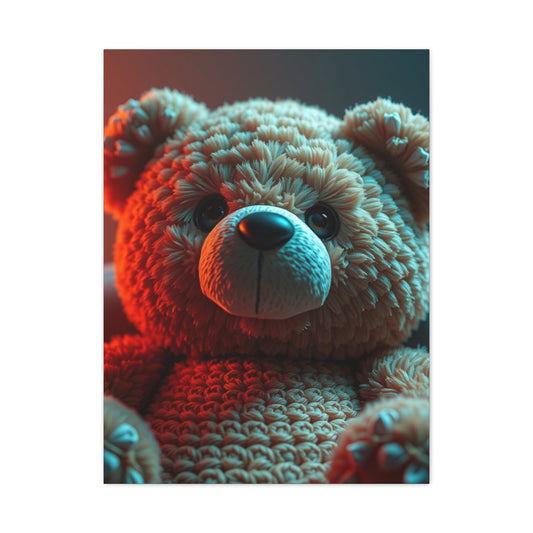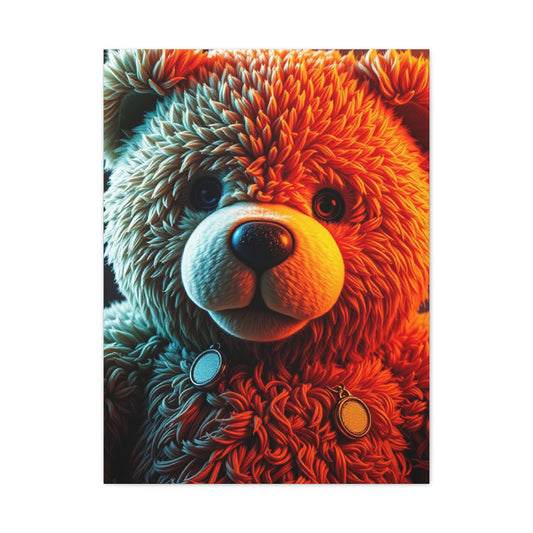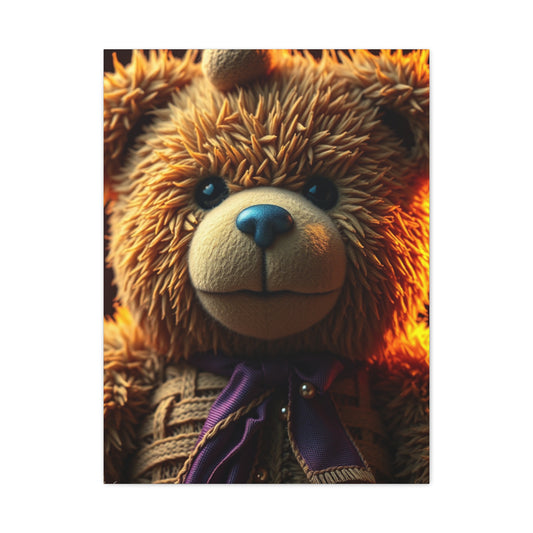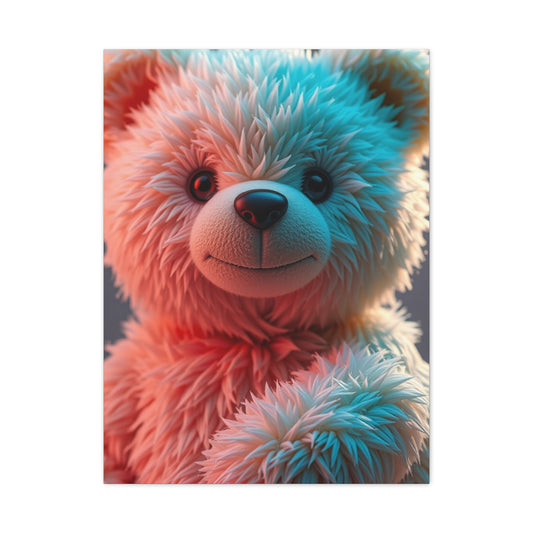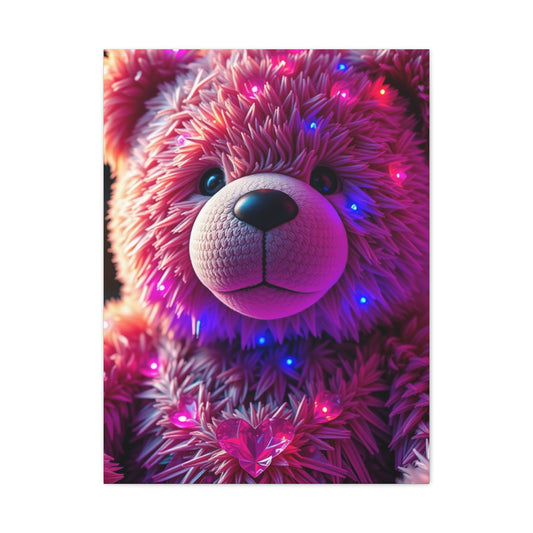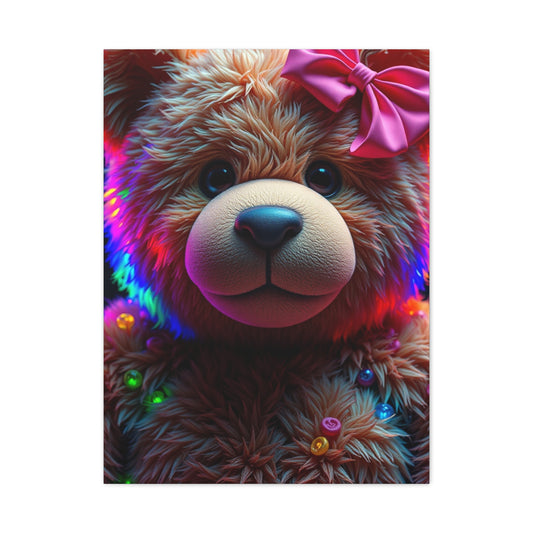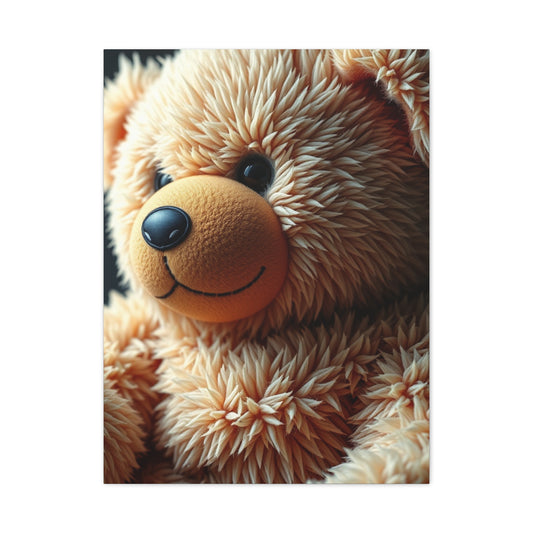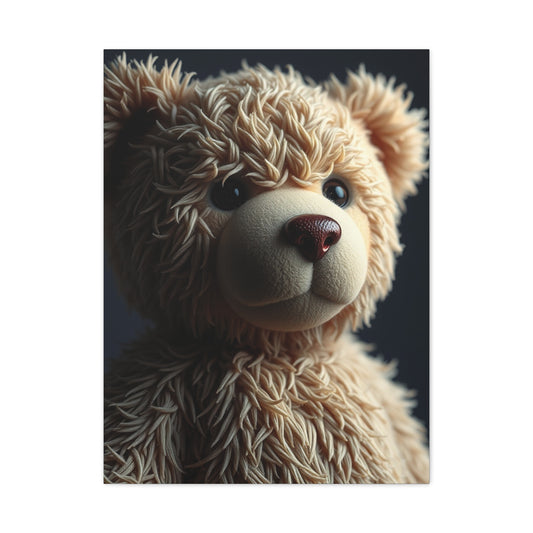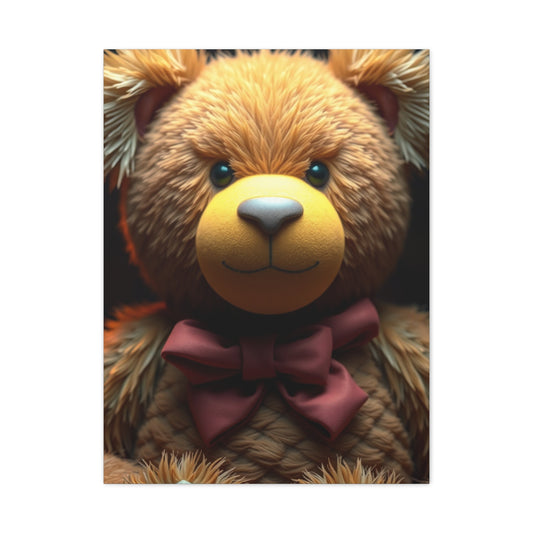Teddy Bear Nursery Wall Art: 17 Delightful Printables
Creating a warm and inviting nursery is an essential part of preparing for your baby’s arrival. Wall art plays a significant role in setting the tone of the space. Among various options, teddy bear nursery wall art stands out for its timeless charm and ability to evoke feelings of comfort and nostalgia. These pieces not only enhance the visual appeal of a nursery but also contribute to the emotional environment by making the room feel cozy and nurturing.
Teddy bears have long been associated with childhood innocence and affection. Incorporating them into nursery decor creates a space that feels safe, gentle, and welcoming. From classic portraits to whimsical illustrations, the versatility of teddy bear-themed art allows parents to choose pieces that resonate with their preferred style while complementing the overall nursery theme.
The Role of Wall Art in Early Childhood Environments
The presence of thoughtfully selected wall art can have a subtle yet meaningful impact on a child’s environment. Beyond aesthetic appeal, wall art stimulates curiosity, supports early cognitive development, and fosters a sense of comfort. In a nursery setting, visuals play a crucial role in creating a balanced sensory experience. Soft colors, playful imagery, and familiar motifs like teddy bears can help in establishing a calming and positive atmosphere.
Research in early childhood design emphasizes the importance of surroundings in a child’s emotional and intellectual growth. Walls adorned with engaging images can serve as conversation starters, encourage visual tracking, and stimulate recognition skills in infants. By choosing art that blends creativity with comfort, parents provide not just decoration but also a foundation for sensory and emotional development.
Benefits of Printable Wall Art for Nurseries
One of the most practical ways to incorporate teddy bear art into a nursery is through printable wall art. Printable art offers several advantages that traditional framed artwork might not. Affordability is one of the most significant benefits. Free or low-cost printables allow parents to decorate extensively without a considerable financial investment, making it possible to refresh or update the room easily as the child grows.
Convenience is another important factor. With printables, parents can download designs instantly and print them at home or through a local print shop. This flexibility allows for immediate customization, ensuring that the artwork fits the exact dimensions of the nursery walls or frames. Parents can also select from a diverse range of designs, styles, and color palettes, creating a curated collection that reflects personal taste and enhances the room’s aesthetic.
Choosing the Right Teddy Bear Art for Your Nursery
Selecting the perfect piece of wall art involves several considerations. Theme coordination is essential to ensure that each piece contributes to a cohesive look. If the nursery has a broader bear theme or a specific teddy bear motif, the artwork should complement other decorative elements, including bedding, curtains, and toys. Choosing pieces that harmonize with the overall theme creates a visually unified and calming space.
Color harmony is equally important. Nursery walls often feature soft, soothing tones, and the artwork should either complement these shades or provide gentle contrast without overwhelming the space. Soft pastels, muted earth tones, and delicate watercolors are ideal for creating a serene environment conducive to rest and play.
Placement strategy is another key aspect of incorporating wall art. Certain areas of the nursery, such as above the crib, the changing station, or a play corner, are naturally more visible and can serve as focal points. Thoughtful placement not only enhances the room’s visual appeal but also ensures that the artwork engages the child’s attention appropriately without cluttering the space.
Exploring Different Styles of Teddy Bear Nursery Art
Teddy bear nursery art comes in a wide variety of styles, each bringing its unique charm to a nursery. Classic teddy bear portraits evoke a sense of nostalgia and timelessness, often featuring traditional brown bears in gentle, lifelike poses. These pieces work well in both modern and vintage-inspired nurseries, offering a comforting presence that resonates across generations.
Watercolor teddy bears introduce a dreamy and soft aesthetic. The fluidity of watercolors can create an ethereal and calming effect, ideal for bedtime environments or spaces where tranquility is a priority. These prints often feature pastel tones, delicate textures, and subtle shading that enhance the visual softness of the room.
Sleepy bear illustrations focus on calmness and relaxation. A bear depicted in a restful or sleeping posture can subtly reinforce the importance of rest and create a peaceful bedtime routine. Similarly, scenes of bears engaging in quiet activities, such as reading or cuddling, can promote a nurturing atmosphere and model comforting behavior.
Teddy bears in playful settings bring joy and liveliness to the nursery. Illustrations of bears holding balloons, playing with toys, or interacting with friends create a sense of movement and delight. These prints are particularly suitable for play areas, stimulating the child’s imagination and providing visual cues for interaction and fun.
Popular Teddy Bear Nursery Printables
Teddy bear nursery printables provide a flexible and creative way to decorate a baby’s room. They come in various styles and moods, from classic and vintage to whimsical and playful. Choosing the right printables depends on the desired aesthetic, color palette, and thematic approach of the nursery. Classic teddy bear portraits are timeless and work well in a wide range of nursery designs. These prints typically feature the traditional brown or beige bear in a neutral or softly colored background, evoking warmth and nostalgia. They pair beautifully with other classic nursery decor, such as wooden toys, muted textiles, and traditional furniture.
Watercolor teddy bear illustrations are increasingly popular for modern nurseries. The soft, flowing textures of watercolor art create a calming effect, ideal for promoting relaxation and sleep. These prints often incorporate soft pastel tones such as blush, mint, or lavender. Watercolor art can also include subtle background elements, like clouds, stars, or balloons, adding a dreamy dimension to the nursery environment.
Sleepy bear printables focus on conveying tranquility. Depictions of bears lying down, snuggling with blankets, or gently resting encourage a peaceful atmosphere. Parents often place these prints above the crib or near a rocking chair to reinforce calming routines. Sleepy bear art can include complementary elements such as moons, stars, or night skies to enhance the bedtime theme.
Whimsical and Playful Teddy Bear Art
Beyond calm and classic imagery, playful teddy bear prints bring life and joy to the nursery. Illustrations of bears holding colorful balloons, playing with friends, or dancing can create an engaging focal point. These cheerful prints encourage interaction and can even become conversation starters during playtime. They are particularly suited to wall spaces near play mats or reading corners, where the child can visually explore and develop early recognition skills.
Bohemian-inspired teddy bear art offers a unique stylistic choice. These prints often feature abstract patterns, tribal designs, or earthy tones, merging contemporary interior trends with the charm of traditional teddy bears. Boho bear prints suit nurseries that integrate natural textures, woven rugs, wooden accents, and neutral tones. This approach allows parents to create a stylish and modern nursery without sacrificing the playful and nurturing qualities of teddy bear imagery.
Floral teddy bear prints are another charming option. Bears adorned with floral crowns or surrounded by soft botanical elements can create an elegant, gentle aesthetic. Floral prints work beautifully in gender-neutral nurseries or in rooms with pastel and earthy color schemes. They complement other decorative elements such as patterned curtains, bedding, or cushions, creating a cohesive and visually appealing environment.
Themed Nursery Galleries
One of the most effective ways to enhance a nursery with teddy bear art is by creating a themed gallery wall. Gallery walls allow for multiple printables to be displayed together, creating a curated look that reflects personality and style. Parents can mix and match different types of teddy bear art, combining classic portraits with playful illustrations or watercolor prints with boho designs.
A gallery can also include complementary elements such as framed quotes, alphabets, or nature-inspired artwork. Careful attention to color and composition ensures the gallery feels harmonious rather than cluttered. Aligning frames symmetrically or creating a balanced asymmetrical arrangement can both be visually appealing, depending on the desired style.
Strategic placement is essential when creating a gallery wall. Central locations such as above the crib, changing table, or a focal wall in the nursery allow the art to draw attention and establish a sense of cohesion. Consider spacing between frames and consistency in frame style or color to maintain a unified look. By arranging multiple prints thoughtfully, parents can transform the nursery into a visually stimulating yet serene environment.
Personalization in Teddy Bear Nursery Art
Personalized teddy bear printables add an extra layer of meaning to a nursery. Customization options may include adding the baby’s name, birthdate, or a short message. Personalized art creates a sense of identity and can become a cherished keepsake as the child grows. These prints can be combined with other standard teddy bear illustrations to create a unique and intimate space.
Customizable prints also allow parents to match color schemes and stylistic preferences precisely. Whether choosing a modern minimalist style or a classic vintage aesthetic, personalization ensures that each piece fits seamlessly into the nursery’s overall decor. This approach encourages creativity and provides parents with an opportunity to express their design preferences while adding sentimental value.
Integrating Teddy Bear Art with Other Decor
While teddy bear art can stand alone, integrating it with other nursery elements enhances the overall aesthetic. Coordinating prints with bedding, rugs, curtains, and stuffed animals creates a cohesive and immersive environment. For instance, a watercolor bear print in soft mint can be paired with matching cushions, blankets, and rugs, resulting in a visually unified and soothing space.
Lighting is another factor to consider when displaying nursery art. Soft, diffused lighting helps highlight artwork without creating glare or harsh shadows. Placement near natural light sources, such as windows, or using gentle night lights can enhance the visual appeal of prints and contribute to a warm and welcoming atmosphere.
Wall art can also complement functional elements in the nursery. For example, placing art above a bookshelf, changing table, or reading nook creates focal points that draw the eye and balance practical elements with decorative appeal. By integrating prints thoughtfully with furniture and accessories, parents can design a nursery that is both aesthetically pleasing and functional.
Creating a Balanced Visual Experience
A balanced visual experience ensures the nursery feels harmonious and inviting. Parents should consider factors such as scale, proportion, and color when selecting and arranging prints. Mixing large and small prints can create depth and interest, while maintaining a consistent color palette ensures cohesion. For example, pairing a large central bear portrait with smaller complementary prints, such as floral or playful bear illustrations, creates a visually satisfying arrangement.
Consistency in frame style or print finish also contributes to a polished look. Coordinating frame colors, materials, or finishes helps unify multiple prints, even when their styles differ. Whether using simple wooden frames, sleek modern frames, or decorative vintage options, attention to detail enhances the overall aesthetic.
Seasonal and Thematic Teddy Bear Nursery Decor
Teddy bear nursery wall art can be adapted to reflect seasonal themes, holidays, or special occasions, allowing the nursery to feel fresh and engaging throughout the year. Seasonal artwork, such as bears with autumn leaves, winter snowflakes, or spring blossoms, provides subtle visual variety while reinforcing the room’s cozy and playful atmosphere. Parents can rotate printables seasonally to keep the nursery environment stimulating and visually appealing.
Holiday-themed teddy bear prints also create opportunities for festive décor. Bears wearing Santa hats, holding pumpkins, or celebrating birthdays bring joy and excitement to the nursery. These prints can serve as temporary decorations that introduce a playful, celebratory mood without overwhelming the overall design. Seasonal and holiday integration allows parents to make the nursery feel dynamic, providing children with changing visual cues that stimulate curiosity and engagement.
Creating a Gender-Neutral Nursery with Teddy Bear Art
Teddy bear wall art is highly versatile and ideal for gender-neutral nurseries. Neutral color palettes such as soft grays, beiges, whites, and muted pastels ensure that prints appeal to any child and provide a timeless aesthetic. Illustrations that emphasize playfulness, friendship, or nature themes can reinforce a gender-neutral approach while maintaining warmth and charm.
Gender-neutral teddy bear art also allows flexibility as the child grows. Neutral designs can be combined with other themed prints or toys, adapting the nursery for various stages of development. This approach reduces the need for frequent redecorating while maintaining a cohesive and nurturing environment that remains appealing to both children and parents.
Combining Different Art Styles for a Cohesive Look
A modern nursery often incorporates multiple art styles to create a curated gallery. Mixing styles such as classic portraits, watercolor illustrations, and whimsical playful designs can result in a dynamic and engaging space. However, balance is essential to ensure that the nursery remains harmonious rather than chaotic.
One approach is to unify prints through a consistent color palette. Selecting artwork that shares complementary tones ensures visual cohesion even if the styles differ. Another strategy is to vary frame styles while maintaining a central theme. For example, pairing sleek minimalist frames with traditional wooden frames can highlight the diversity of artwork while keeping the display cohesive.
Parents can also create rhythm and flow by strategically arranging prints. Larger prints can act as focal points, while smaller illustrations support the central theme. Alternating styles and sizes creates visual interest and encourages exploration, allowing the child to engage with different elements while keeping the overall look organized and balanced.
Enhancing the Nursery Atmosphere Through Art
Teddy bear wall art contributes significantly to the nursery’s atmosphere. Artwork depicting sleep, play, or gentle interaction reinforces the emotional tone of the room. Prints with calming scenes, such as sleepy bears or bears with stars and moons, support bedtime routines and create a serene environment. Conversely, lively illustrations of playful bears stimulate imagination and creativity, particularly in play areas or reading nooks.
The arrangement of wall art influences mood as well. Art positioned at eye level for both parents and children ensures maximum engagement. Placing soothing prints near areas of rest and playful prints near activity zones aligns visual cues with the child’s behavior and daily routines. By thoughtfully combining imagery, placement, and color, parents can craft a nursery atmosphere that balances calmness with stimulation, providing an optimal environment for growth and development.
Integrating Nature and Adventure Themes
Teddy bear art can seamlessly incorporate elements of nature and adventure. Illustrations featuring bears exploring forests, playing with woodland creatures, or camping in outdoor scenes bring a sense of wonder and discovery to the nursery. These prints encourage curiosity and imagination while creating a connection with natural environments.
Nature-inspired teddy bear art pairs well with organic textures, such as wooden furniture, woven rugs, and linen textiles. This combination reinforces a harmonious, earthy aesthetic while maintaining a playful and child-friendly ambiance. Incorporating adventure and nature themes also provides opportunities for parents to introduce educational elements, such as animal identification or environmental awareness, subtly blending learning with visual enjoyment.
Creating Interactive Nursery Walls
Interactive nursery walls combine visual appeal with engagement. Parents can pair teddy bear prints with elements that encourage sensory exploration, such as fabric textures, tactile decals, or removable wall stickers. These interactive components invite children to explore, touch, and engage with their surroundings, supporting early developmental skills such as hand-eye coordination and visual tracking.
For instance, a print of a bear surrounded by stars can be accompanied by glow-in-the-dark star stickers, transforming the wall into an interactive nighttime scene. Similarly, prints featuring playful bears can be paired with felt or fabric accents to create a multidimensional sensory experience. Interactive walls not only enhance the nursery’s aesthetic but also provide functional engagement that supports early learning and cognitive development.
Rotating Art and Refreshing the Nursery
Regularly updating wall art keeps the nursery dynamic and responsive to the child’s changing interests. Parents can rotate prints to reflect new developmental stages, seasonal changes, or evolving themes. This approach prevents the space from becoming static and encourages the child to explore new imagery, supporting curiosity and visual development.
Rotating art is particularly effective when using printable designs, as it allows for affordable and easy updates. Printables can be swapped in and out of frames or displayed on rotating clipboards and shelves. This flexibility ensures that the nursery remains visually stimulating without requiring permanent changes or costly redecorating.
Encouraging Imagination and Storytelling
Teddy bear wall art provides an excellent tool for fostering imagination and storytelling. Each print can become part of a larger narrative, encouraging children to invent stories, describe scenes, or identify characters. Parents can use illustrations as prompts during playtime or reading sessions, enhancing language development and cognitive skills.
Interactive storytelling with teddy bear art also supports emotional development. By interpreting facial expressions, body language, and situational context in the artwork, children develop empathy and social understanding. Engaging with art in this manner makes the nursery not only a visually appealing space but also a rich environment for learning, growth, and emotional connection.
Incorporating Educational Elements
Teddy bear art can double as an educational resource. Prints that include letters, numbers, shapes, or simple words provide opportunities for early learning in a visually appealing format. For example, a bear illustration combined with the alphabet encourages letter recognition, while bears with numbers or counting elements support numeracy skills.
Educational teddy bear prints can also be thematic, integrating nature, friendship, or daily routines. By embedding learning elements into visually attractive artwork, parents can create a nursery that nurtures both the child’s imagination and foundational educational skills. This approach combines aesthetics with functionality, making the wall art a valuable component of the overall nursery design.
Personalizing Seasonal or Themed Prints
Personalization can extend beyond names and dates to seasonal or thematic elements. Parents can add details such as favorite colors, family motifs, or subtle seasonal touches to create a unique, meaningful space. Customization ensures that the nursery feels personal and reflective of the family’s identity while maintaining the charm and warmth of teddy bear imagery.
Printing and Displaying Teddy Bear Nursery Wall Art
Printing your teddy bear nursery wall art is the first step in transforming the nursery into a cozy and visually appealing space. High-quality printing ensures that colors remain vibrant, details are crisp, and the overall aesthetic of the art is maintained. Parents can print artwork at home using premium paper designed for photo or art prints, or they can utilize professional print shops for a more polished finish.
Paper choice influences the final look of the prints. Matte finishes provide a soft, understated appearance that works well in calming nursery environments. Glossy finishes, on the other hand, enhance colors and detail, adding brightness to the room. For a textured and tactile feel, fine art paper or canvas prints can offer a more artistic presentation. Selecting the right paper and finish ensures that each piece complements the nursery’s decor while remaining durable and long-lasting.
Choosing Frames for Nursery Art
Frames serve both functional and aesthetic purposes in a nursery. They protect artwork from dust, accidental spills, or handling while adding structure and definition to each piece. When selecting frames, consider the color, material, and style. Neutral wooden frames suit classic and rustic nurseries, while sleek black or white frames complement modern or minimalist designs. Decorative frames with subtle detailing can enhance the charm of whimsical or vintage teddy bear prints.
Frame size should correspond to the dimensions of the print and the wall space available. Large central prints work well as focal points, while smaller prints can be grouped in clusters to create dynamic gallery walls. Consistency in frame style or color can unify diverse artwork, creating a cohesive and polished display. Parents can also experiment with mixed frame styles to add interest, provided there is a clear visual theme tying the pieces together.
Arranging Wall Art for Maximum Impact
The placement of wall art is crucial in achieving a visually harmonious nursery. One effective method is to align artwork with furniture and architectural features. For example, a central print above the crib can anchor the space, while smaller prints can be arranged around shelves, changing tables, or seating areas to maintain balance.
Gallery walls allow for multiple prints to be displayed together, creating a curated and engaging environment. Symmetrical arrangements provide a sense of order and calm, while asymmetrical layouts add energy and visual intrigue. Maintaining consistent spacing between prints ensures that the wall does not appear cluttered. Parents can use templates or painter’s tape to experiment with layouts before hanging artwork, ensuring optimal positioning and composition.
Layering and Complementing with Other Decor
Teddy bear prints can be layered and complemented with other nursery elements to enhance the room’s depth and visual interest. For instance, pairing prints with wall shelves allows for the display of toys, books, or plants alongside the art, creating a dynamic and interactive space. Textiles such as rugs, curtains, and cushions can reflect colors or motifs from the artwork, reinforcing cohesion and theme consistency.
Lighting is another important factor. Soft, indirect lighting highlights prints without causing glare, preserving the gentle ambiance of the nursery. Night lights or subtle accent lighting can create a comforting atmosphere, particularly for sleepy bear illustrations. Coordinating lighting with the placement of prints enhances the overall sensory experience, making the nursery feel warm and inviting.
Maintaining and Protecting Nursery Art
Nursery environments are naturally active, with children exploring their surroundings and parents performing daily routines. Protecting wall art is essential to preserving its longevity. Frames with glass or acrylic fronts prevent dust accumulation and accidental spills. Laminated prints or canvas prints are more resistant to wear and tear, offering durability for long-term display.
Regular cleaning with a soft, dry cloth prevents dust buildup and maintains vibrancy. Avoid using harsh chemicals or abrasive cleaners, which can damage prints and frames. Rotating or refreshing prints periodically not only protects individual pieces from prolonged exposure to sunlight but also keeps the nursery visually stimulating. Maintaining art in good condition ensures that it continues to enhance the nursery environment for years.
Creating Cohesive Color Palettes
A cohesive color palette enhances the visual harmony of the nursery. Teddy bear prints often feature soft pastels, muted neutrals, or gentle earth tones, which naturally blend with a variety of decor styles. Coordinating prints with wall colors, bedding, and furniture ensures that the overall environment feels unified and intentional.
Accent colors can be introduced through smaller prints, cushions, or decorative objects. For example, a print of a teddy bear holding balloons in soft yellows, blues, or pinks can be paired with similar-colored accessories to create continuity. By thoughtfully combining colors, parents can create a nursery that is visually soothing, aesthetically appealing, and conducive to rest and play.
Incorporating Themes and Storytelling
Beyond aesthetics, wall art can support thematic storytelling within the nursery. Prints that depict bears in imaginative settings—forests, moonscapes, or playful adventures—encourage children to engage with their environment. Parents can create thematic sections within the nursery, such as a reading corner with calm, sleepy bear illustrations or a play area featuring lively, playful bears.
Thematic storytelling through art not only stimulates imagination but also reinforces routines and behaviors. Sleepy bear prints can signal nap time, while playful bear art can encourage active play and creativity. Using visual cues in this manner fosters a sense of structure and familiarity, helping children feel secure and engaged in their surroundings.
Integrating Learning Opportunities
Teddy bear wall art can also incorporate educational elements to enhance developmental growth. Prints featuring letters, numbers, shapes, or simple words introduce learning in a visually engaging way. For instance, a print of a bear with alphabet blocks supports letter recognition, while a bear counting stars reinforces numeracy skills.
Educational elements can be subtly integrated without compromising the aesthetic appeal of the nursery. Combining playful illustrations with letters or numbers encourages interaction and exploration, promoting early cognitive skills. Parents can also use wall art as a prompt for storytelling or discussion, making learning a natural part of daily routines.
Encouraging Interaction and Engagement
Interactive wall art engages children and supports sensory development. Prints can be paired with tactile elements such as felt accents, textured decals, or removable stickers. This approach encourages touch and exploration, stimulating hand-eye coordination and visual tracking.
For example, a print of a bear surrounded by stars can be complemented with glow-in-the-dark star stickers, allowing the child to interact with the scene during both day and night. By creating interactive walls, parents can combine decorative appeal with developmental engagement, transforming the nursery into a space that nurtures growth, learning, and creativity.
Long-Term Inspiration and Keepsakes
Teddy bear wall art often becomes a cherished keepsake as the child grows. Prints can be saved, reframed, or repurposed into scrapbooks, memory albums, or personalized gifts. Seasonal or personalized prints add sentimental value, creating lasting memories associated with the nursery experience.
Parents can also draw inspiration from their initial wall art choices when redecorating as the child grows. Classic prints can be complemented with contemporary illustrations or expanded into larger gallery walls, maintaining continuity while adapting to evolving tastes. By planning for long-term versatility, teddy bear wall art serves as both a decorative and sentimental investment.
Tips for Selecting High-Quality Printables
When choosing printables for a nursery, quality and resolution are essential factors that significantly affect the final look and feel of the wall art. High-resolution files provide crisp details and vibrant colors, ensuring that each design element—from the soft lines of a teddy bear’s fur to the subtle shading of a background—appears sharp and visually appealing. This becomes especially important when printing larger pieces, as low-resolution files can appear pixelated or blurry, diminishing the overall aesthetic of the nursery. By prioritizing high-resolution artwork, parents can be confident that their prints will maintain their intended visual impact, whether displayed individually or as part of a coordinated gallery wall.
Equally important is attention to copyright and usage rights. With countless printable designs available online, it is vital to verify that the artwork can be legally used for personal purposes. Many artists provide free or paid printables with specific guidelines for usage. Reviewing these rights not only ensures compliance with intellectual property laws but also supports creators who invest time and effort into designing high-quality artwork. By selecting printables from reputable sources, parents can enjoy peace of mind, knowing that their chosen designs are legally safe to display in their home.
The style and theme of the printables play a crucial role in integrating them seamlessly into the nursery’s décor. Coordinating colors, patterns, and artistic styles with existing furniture, textiles, and wall colors creates a cohesive and harmonious environment. For instance, watercolor teddy bear illustrations might pair beautifully with soft pastel bedding, while bold, playful prints may complement a more energetic or whimsical theme. Previewing designs in the intended display size or using digital mock-ups can help parents visualize how the artwork will look on the walls, making it easier to make informed decisions before printing.
Conclusion:
Designing a nursery with teddy bear wall art is an exciting opportunity for parents to merge creativity, personalization, and functionality in a single space. More than just decorative elements, carefully chosen artwork contributes to a nurturing and inspiring environment where a child can feel secure, comforted, and stimulated. From the selection process to strategic placement and integration with other décor, each decision plays a critical role in establishing a cohesive and harmonious nursery. With thoughtful planning, teddy bear wall art can serve as a centerpiece that brings together the room’s aesthetic, engages the child’s imagination, and supports developmental growth.
Choosing the right teddy bear wall art goes beyond simply picking images that look appealing. Parents can consider multiple aspects, including themes, colors, styles, and materials. For instance, soft, pastel tones tend to evoke feelings of calmness and serenity, creating a soothing environment for newborns and infants. On the other hand, brighter hues and playful illustrations can energize the space and stimulate visual interest as children grow. Selecting art that resonates with the overall theme of the nursery—whether whimsical, vintage, woodland, or modern—ensures a consistent and visually pleasing atmosphere.
The style of artwork also matters. Hand-drawn illustrations, watercolor prints, and three-dimensional wall hangings all bring different textures and visual depth to a room. Canvas prints, framed posters, or even removable decals can be rotated or updated over time, giving the nursery a dynamic quality that evolves alongside the child. Incorporating eco-friendly and non-toxic materials for the prints or frames ensures safety while reflecting a parent’s commitment to sustainability.
Once the perfect pieces are selected, placement becomes key. Strategically positioning teddy bear wall art can enhance the room’s layout and draw attention to specific areas. For example, placing a large, framed teddy bear illustration above the crib creates a focal point that immediately captures the eye. Smaller prints or decals can complement this centerpiece, creating a gallery wall effect that adds depth and interest. Clustering multiple prints at varying heights encourages visual exploration and gives the room a playful, layered aesthetic.
Placement should also consider the child’s line of sight and interaction with the environment. Artwork positioned at the crib level allows babies to gaze at the shapes and colors, aiding in early visual development. For toddlers, placing art slightly lower on the walls invites engagement, making it easier for them to recognize characters and interact with visual storytelling. Incorporating functional elements such as shelves or hooks near the art provides opportunities for organization while maintaining the decorative focus.

